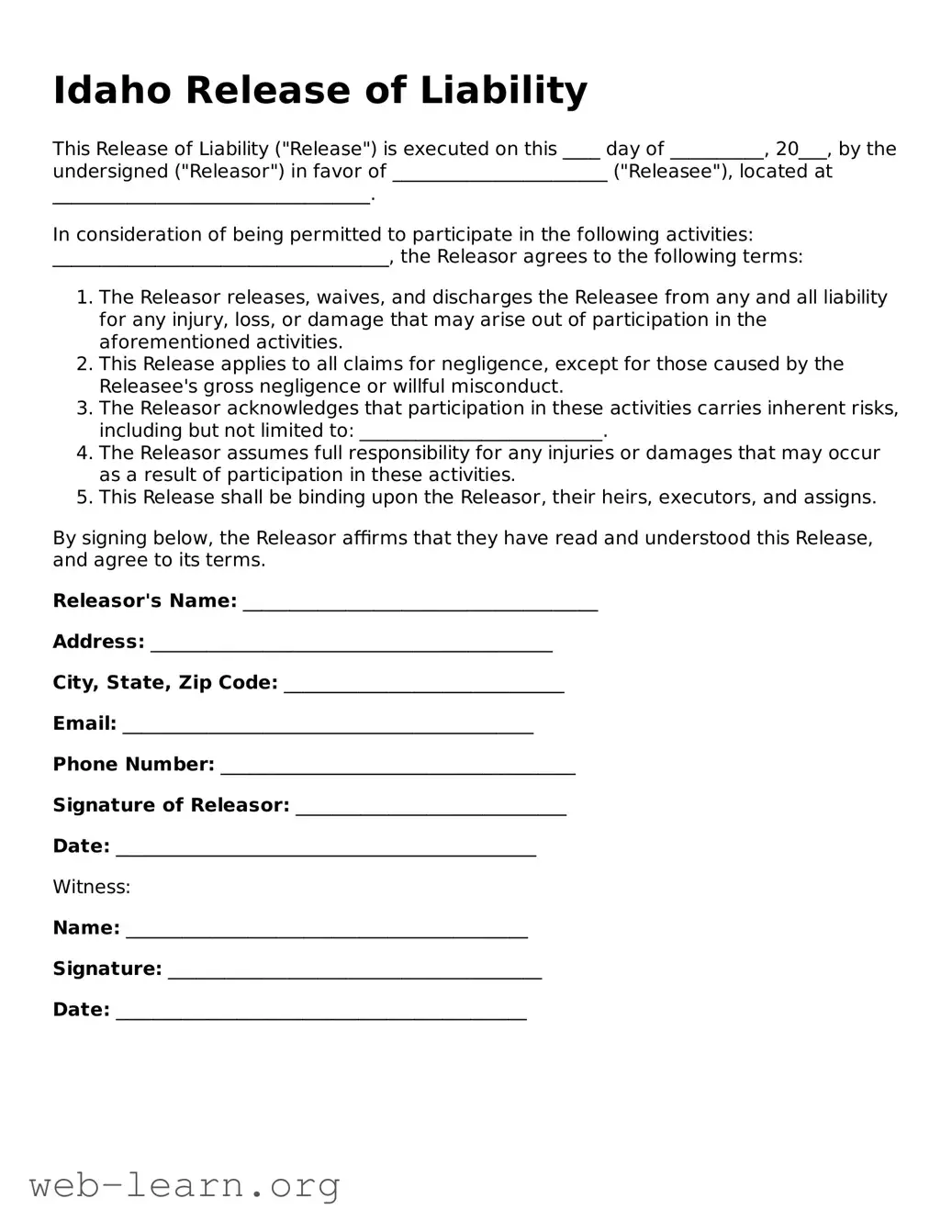Idaho Release of Liability
This Release of Liability ("Release") is executed on this ____ day of __________, 20___, by the undersigned ("Releasor") in favor of _______________________ ("Releasee"), located at __________________________________.
In consideration of being permitted to participate in the following activities: ____________________________________, the Releasor agrees to the following terms:
- The Releasor releases, waives, and discharges the Releasee from any and all liability for any injury, loss, or damage that may arise out of participation in the aforementioned activities.
- This Release applies to all claims for negligence, except for those caused by the Releasee's gross negligence or willful misconduct.
- The Releasor acknowledges that participation in these activities carries inherent risks, including but not limited to: __________________________.
- The Releasor assumes full responsibility for any injuries or damages that may occur as a result of participation in these activities.
- This Release shall be binding upon the Releasor, their heirs, executors, and assigns.
By signing below, the Releasor affirms that they have read and understood this Release, and agree to its terms.
Releasor's Name: ______________________________________
Address: ___________________________________________
City, State, Zip Code: ______________________________
Email: ____________________________________________
Phone Number: ______________________________________
Signature of Releasor: _____________________________
Date: _____________________________________________
Witness:
Name: ___________________________________________
Signature: ________________________________________
Date: ____________________________________________
